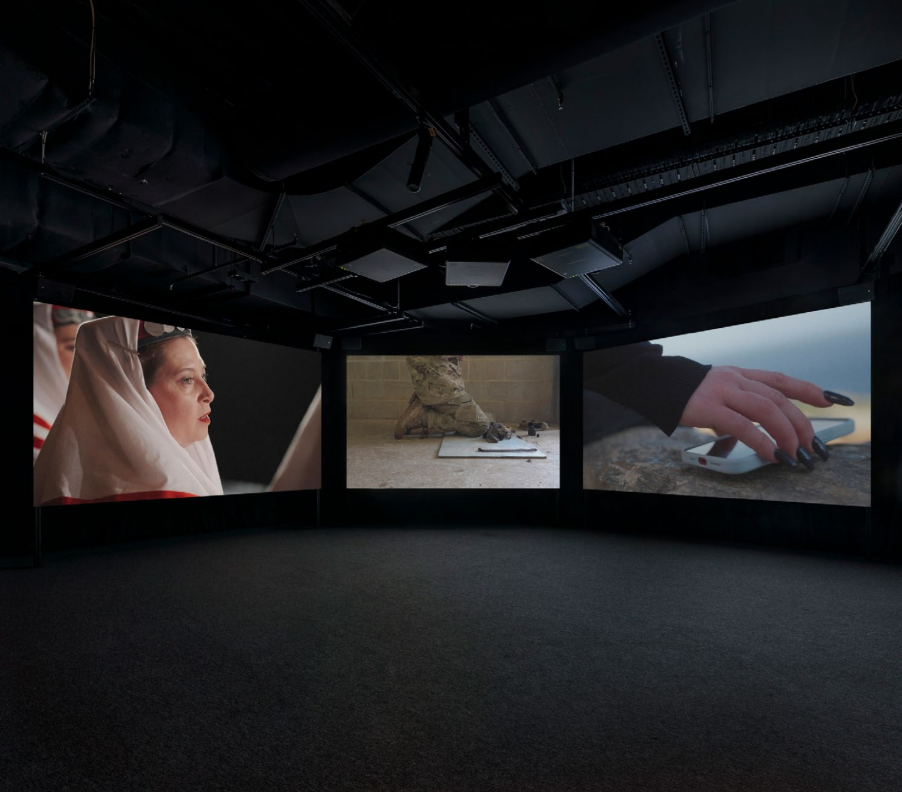Stanislava Pinchuk

The Theatre of War opens with a recitation from Homer’s Iliad. Much like the ancient poem (which begins mid action and is set in the ninth year of the Trojan War) the film unfolds in the ninth year of Russia’s invasion of Ukraine. Traditionally, the Iliad was performed by rhapsodes over the course of three days, accompanied by the steady rhythm of a lyre to aid performers’ memory.
In this film, the initial lines of the Iliad are performed over consecutive days but in three separate theatres of conflict: a stage that became a symbol of cultural defiance during the Siege of Sarajevo, a UK combat training ground for Ukrainian Army conscripts once used by peacekeepers in the Balkans, and the purported Tomb of Homer and his mother on the Greek island of Ios (overlooking the seas where the battles of the Iliad are said to have occurred).
The question of authorship of the Iliad has long sparked debate, with scholars questioning Homer’s role as a singular creator, drawing parallels with traditions of epic recitation present in Serbia and Bosnia & Herzegovina, where such works are attributed to collective voices rather than individual authors. Ukrainian philosopher Rachel Besplatoff, writing in 1939 on the brink of war, remarked in her essay On the Iliad: “we do not step into [Homer’s world]; we are [already] there”. Drawing parallels between ancient and contemporary conflicts, this work serves as a sobering reminder of war’s pervasive and unrelenting presence, and responds to the anonymous “she” who is evoked in the title of the Gjon Mili Exhibition this year.